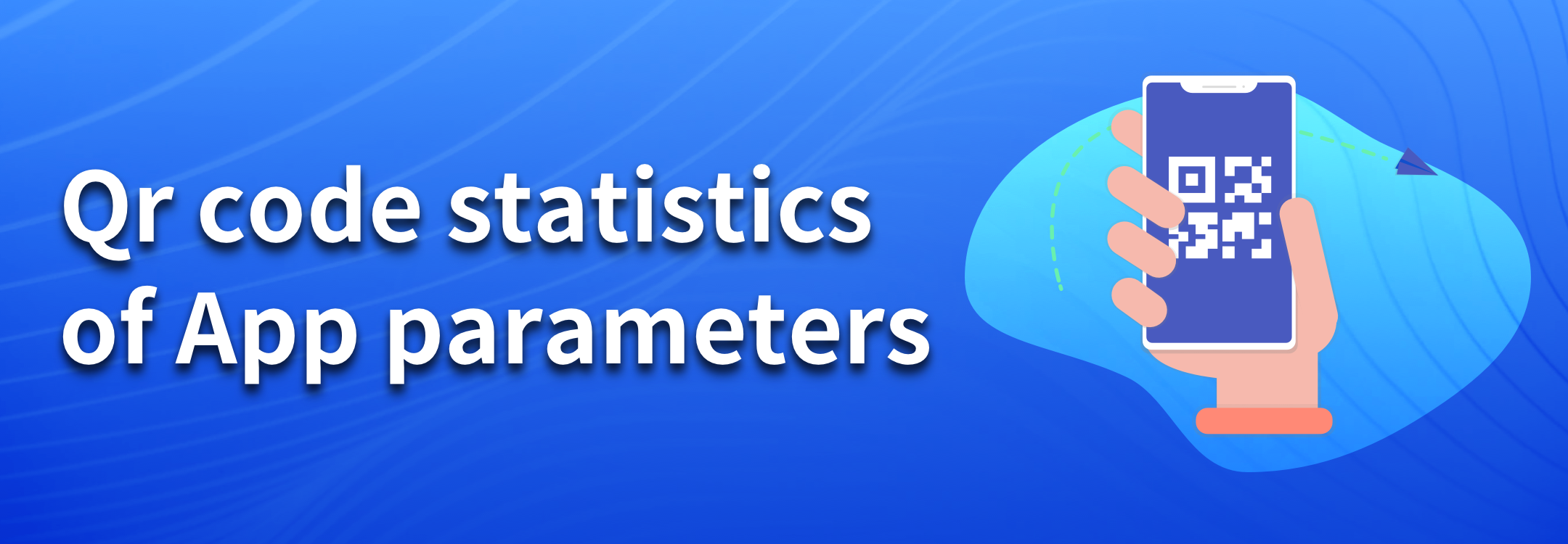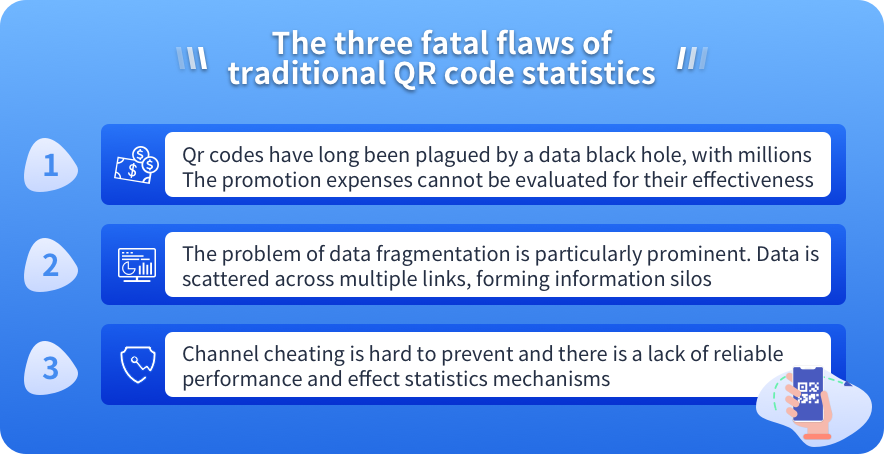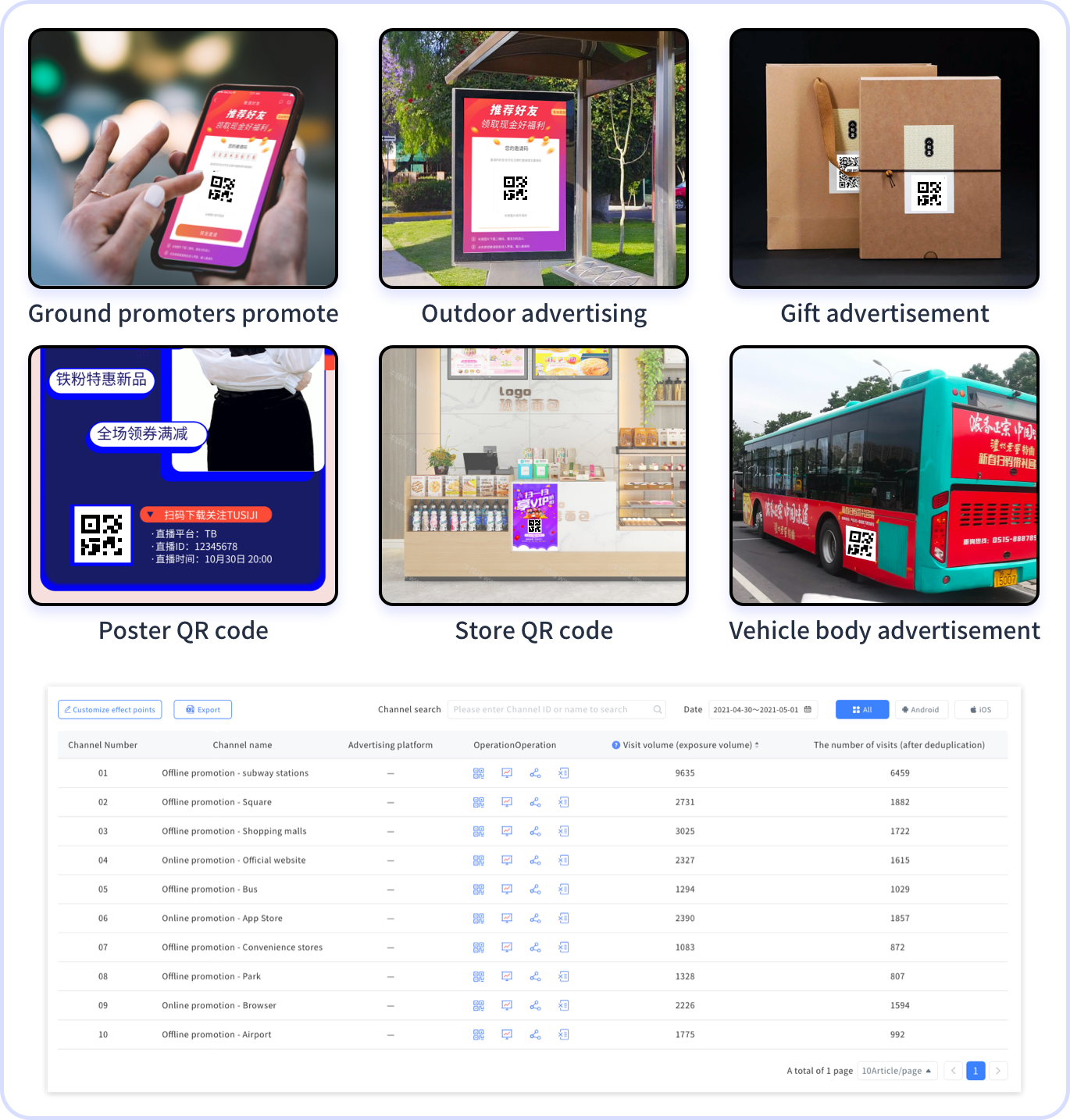
Qr code statistics of App parameters
- 2025.07.02 10:00
- openinstall
- Scenario Analysis
In an era where mobile internet traffic growth has plateaued, a major conglomerate discovered that distributing 5,000 QR codes through offline scenarios drove a 300% higher user activation rate compared to online ads. This staggering disparity highlights the immense value of parameterized QR codes in Precise customer acquisition.
However, accurately tracking the conversion performance of each QR code remains a critical technical challenge for marketing teams.
Three Fatal Flaws of Traditional QR Code Tracking

In app promotion, QR codes have long suffered from data black holes. Third-party research reveals that over 68% of apps fail to track post-scan user behavior. For example, a financial app distributed 100,000 offline flyers but could not trace the source of many installations, forcing them to categorize these as “direct traffic”—rendering millions in ad spend unmeasurable.
Data fragmentation compounds the issue. A user’s journey—scanning a QR code → landing page → download → registration—spans multiple platforms, creating silos. One education app found a 23% discrepancy in tracking UV-to-download conversions due to scattered data.
Fraudulent activity further undermines trust. A popular utility app once faced 5,000+ fake installs per day from dishonest partners, costing an extra RMB 200,000. These flaws severely limit QR codes’ potential as Precise customer acquisition tools.
The Solution: Dynamic Parameterized QR Codes
By leveraging openinstall’s parameterized installation technology, dynamic QR codes enable end-to-end tracking, solving traditional pain points:
- Unique Parameter Generation: Automatically assign custom parameters (e.g., channel ID, time, location).
- Seamless Data Flow: openinstall’s web SDK captures scan data.
- Post-installation, its mobile SDKs (Android/iOS) match parameters to restore user paths.
- Real-Time Analytics: Track conversions across stages—scans, downloads, registrations, and post-activation behavior.
Multi-Dimensional Dashboards: Analyze performance by channel, region, campaign, and more:
![]()
Advanced Strategies for Parameterized QR Code Campaigns
Case 1: A top e-commerce platform used 200 dynamic QR codes for offline stores, KOL livestreams, and package inserts during a sales event. QR codes on delivery boxes drove 40% of app installs.
Case 2: An educational publisher embedded dynamic QR codes in textbooks. Scanning unlocked online courses, enabling the platform to identify high-value content and optimize offerings.
Openinstall’s deep insights help map the full user journey:
Scan source → Download context → First open → Registration → Core feature usage → Payment conversion.

Eliminating Data Leakage in Offline Campaigns
- There is no need to use ground promotion codes or invitation codes to bind identity information, avoiding cumbersome processes and user churn.
- There is no need for manual registration, avoiding human errors and incomplete records.
- Avoid the phenomenon of falsely reporting performance data in order to obtain promotion funds;
- Avoid the phenomena of complex, lengthy and inefficient step-by-step statistical summary processes.
Conclusion
With parameterized QR codes and intelligent analytics, app promotion has entered an era of “microscopic precision.” openinstall, a leader in channel attribution, has empowered over 10,000 businesses to visualize campaign ROI. In data-driven competition, mastering dynamic QR codes means seizing control of Precise customer acquisition.
Recent Posts
- OpenInstall Omnichannel Multi-scenario Solution
- Having trouble acquiring users and achieving conversions for your app? Here are solutions based on real-world examples.
- openinstall: A solution for attribution and redirection from web to app (W2A).
- How to efficiently use app data statistics
- In today’s wave of social networks, how should developers make good use of omni-channel statistics?
- ASA Attribution Statistics: Breaking Through the Gap in iOS Customer Acquisition Data from a Developer’s Perspective, Making Advertising Decisions More Traceable
- Openinstall Core Function Usage Guid
- What benefits can a Web to App attribution solution bring?
- IMore than just “data calculation”: The underlying logic of APP channel agent statistics is the key to doubling conversion efficiency
- How to Use App Install Parameters for Channel Attribution



